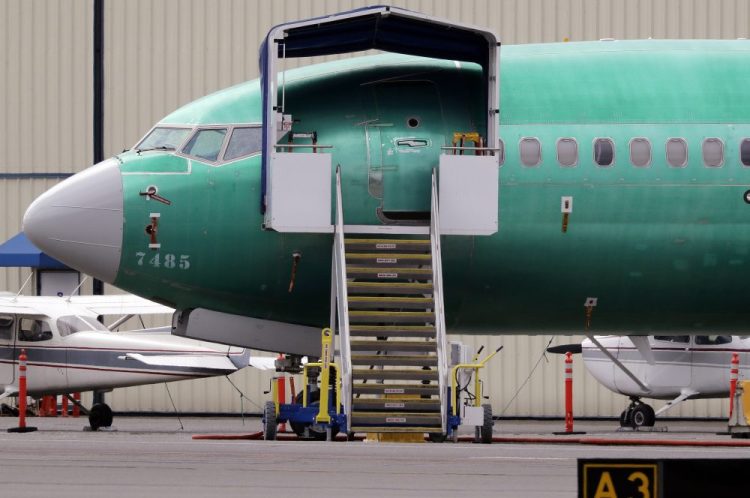Airlines are planning for the possibility that Boeing’s beleaguered 737 Max commercial jetliners will remain out of commission late into the fall, as the company works to fix a host of technical problems that have rendered the planes grounded since early March.
The three U.S. airlines that operate Max jets – American, United and Southwest – announced in recent days that they will cancel 737 Max flights through Nov. 2, Nov. 3 and Oct. 1 respectively, affecting hundreds of flights every day. The new cancellation dates reflect a significant revision from an expected summer timeline presented as a conservative estimate.
The airlines are waiting for the Federal Aviation Administration to sign off on a Boeing-designed software fix for a flight control system that played a role in two deadly crashes. That fix was originally expected to be delivered no later than April, according to an FAA directive issued in early March, but the process has been complicated by the discovery of other technical problems.
A Boeing official, speaking on condition of anonymity because the person was not authorized to publicly discuss the issue, said the company now expects to submit all of its required software updates for approval by the end of September. That could pave the way for the jets to return to regular flight in November, the Boeing official said. American Airlines executives say the company remains confident that the plane will be recertified to fly before the end of the year.
That timeline assumes, however, that regulators do not find additional problems with the jet or its related software fixes. The FAA has declined to offer a firm timeline or even estimate when it expects to lift its grounding order for the Max.
“The FAA is following a thorough process, not a prescribed timeline, for returning the Boeing 737 Max to passenger service,” an FAA spokesman said Sunday. “The FAA will lift the aircraft’s prohibition order when we deem it is safe to do so.”
The 737 Max is the newest version of a long-trusted Boeing jetliner. It was pitched as a more fuel-efficient version of Boeing’s bestselling plane, an improvement that was made possible by changes to the plane’s engines.
There was a concern that the new design would cause the plane’s nose to tip upward and lead to a stall. So Boeing added a new flight control system called the Maneuvering Characteristics Augmentation System that can, in certain rare but dangerous situations, override pilots’ controls and automatically tip the nose of the plane downward.
This change was not made known to pilots flying the planes until weeks after a deadly October crash killed 189 people in Indonesia. Then, in early March, another Boeing Max jet went down in Ethiopia under similar circumstances, killing 157 people.
Regulators around the globe grounded the plane soon after the second crash, and Boeing and the FAA announced that they had been working on a software fix designed to account for the MCAS. That update is now finished, said a Boeing official speaking on the condition of anonymity because the person was not authorized to discuss the issue publicly.
In early April, Boeing told The Washington Post that it had discovered an additional software problem related to plane flaps and other flight-control hardware. And in June, the FAA discovered a new safety problem with the 737 Max, requiring the company to undertake another software fix.
The grounding has taken a sharp financial toll on U.S. airlines and their customers. Flight cancellations are expected to affect about 115 flights per day for American Airlines, 150 flights per day for Southwest, and about 5,000 flights for United during the expected grounding.
Send questions/comments to the editors.



Success. Please wait for the page to reload. If the page does not reload within 5 seconds, please refresh the page.
Enter your email and password to access comments.
Hi, to comment on stories you must . This profile is in addition to your subscription and website login.
Already have a commenting profile? .
Invalid username/password.
Please check your email to confirm and complete your registration.
Only subscribers are eligible to post comments. Please subscribe or login first for digital access. Here’s why.
Use the form below to reset your password. When you've submitted your account email, we will send an email with a reset code.